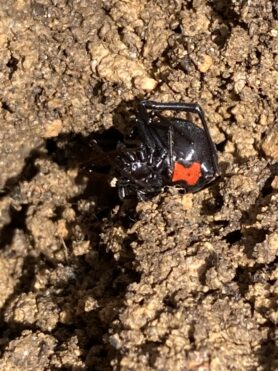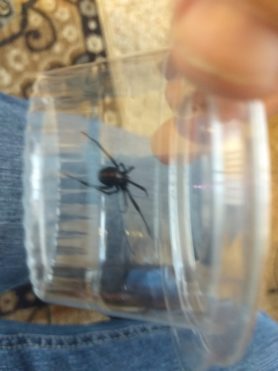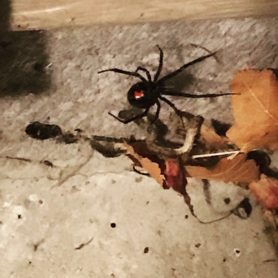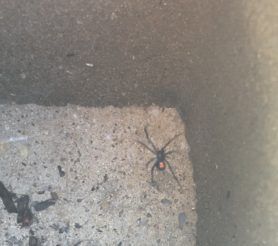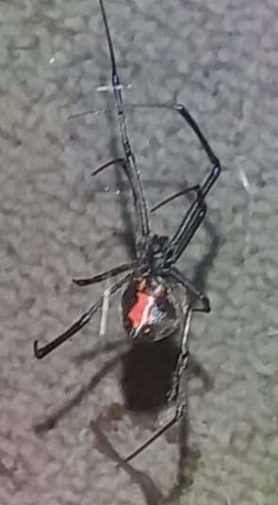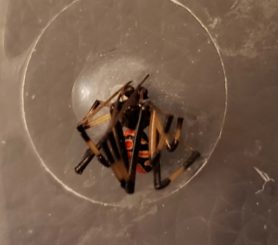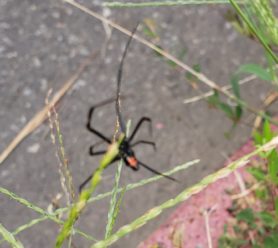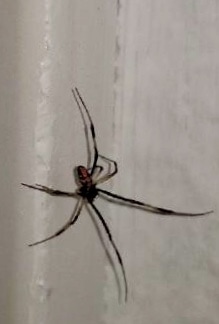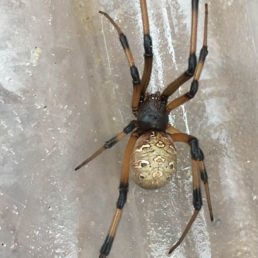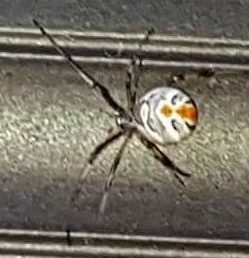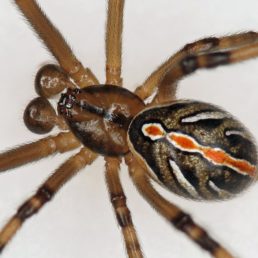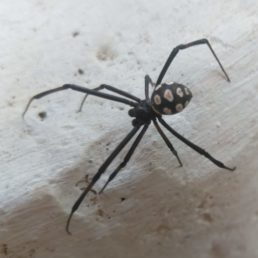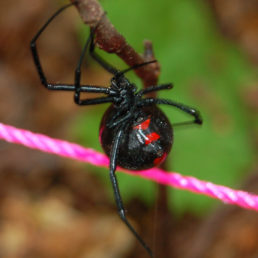Taxonomic Hierarchy
- Kingdom: Animalia
- Phylum: Arthropoda
- Class: Arachnida
- Order: Araneae
- Suborder: Araneomorphae
- Family: Theridiidae
- Genus: Latrodectus
- Species: Latrodectus mactans
Common Name (AAS )
)
Southern Black Widow
Other Common Names
Black Widow, Black Widow Spider, Widow Spider, Hourglass Spider, Shoe Button Spider, Cobweb Spider, Comb-footed Spider, Tangle-web Spider, Gumfoot-web Spider, Button Spider
Author
Johan Christian Fabricius, 1775
Primary Colors
Sightings Overview
There have been 19 confirmed sightings of Latrodectus mactans (Southern Black Widow), with the most recent sighting submitted on March 9, 2024 by Spider ID member annieonthemountain. The detailed statistics below may not utilize the complete dataset of 19 sightings because of certain Latrodectus mactans sightings reporting incomplete data.
- Web: 42% of the time, Latrodectus mactans spiders are sighted in a spider web (Sample size: 19)
- Sex: 8 female and 5 male.
- Environment: Latrodectus mactans has been sighted 13 times outdoors, and 8 times indoors.
- Outdoors: Man-made structure (7). High foliage (1). Ground layer (3). Under rock or debris (1). Forest (1).
Location and Range
Latrodectus mactans (Southern Black Widow) has been sighted in the following countries: United States.
Latrodectus mactans has also been sighted in the following states: Alabama, Arkansas, Florida, Georgia, Louisiana, Maryland, Oklahoma, South Carolina, Tennessee, Texas, Virginia.
Seasonality
Latrodectus mactans has been primarily sighted during the month of July.
- January: 1
- February: 1
- March: 1
- April: 2
- May: 3
- June:
- July: 6
- August: 1
- September: 1
- October: 2
- November:
- December: 1
Additional Remarks
- Not the only “widow spider” in North America; there are also four other species of Latrodectus.
- Females of this species are overall typically smaller in body length than females of Latrodectus hesperus and L. variolus.
- Underside of abdomen has a bright red or orange hourglass-shaped marking (two connected triangles). Rarely, it make be faded, indistinct, or absent. (If the triangles are separated, it may be Latrodectus variolus instead.)
- Top side of abdomen can have white stripes and red or orange spots on the black background; especially in immature specimens.
- Adult males are tiny in comparison to the adult females.
- Contrary to popular belief, female does not always eat her mate; it depends on the circumstances.
- “Deadly” is a misnomer! Human deaths are extremely rare from a widow bite (or any other spider bite, for that matter). Anti-venom exists for treatment, but is rarely necessary; pain medication, muscle relaxers, and/or calcium gluconate are often all that’s needed.
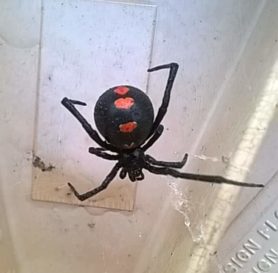 The spider species Latrodectus mactans, commonly known as Southern Black Widow, belongs to the genus Latrodectus, in the family Theridiidae. Latrodectus mactans spiders have been sighted
The spider species Latrodectus mactans, commonly known as Southern Black Widow, belongs to the genus Latrodectus, in the family Theridiidae. Latrodectus mactans spiders have been sighted 